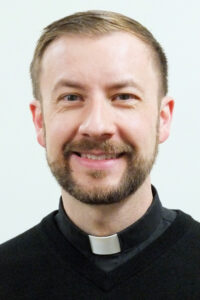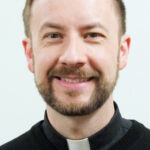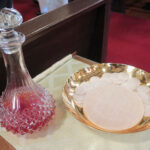By Father Thom Hennen
Queston Box
Could you please explain how a bishop is selected?

This is a timely question as we await the naming of a new bishop for the Diocese of Davenport. It is a process shrouded in mystery for most, though there is good information about how it works. For a more detailed and official explanation, I would direct you to the U.S. Conference of Catholic Bishops’ website: usccb.org and search for “appointing bishops.”
Like so many processes in the Catholic Church, the process of selecting bishops is at once very human and yet, we believe, guided by the Holy Spirit. It starts with existing bishops submitting names of priests who they feel would be qualified to the archbishop of the province (in our case, the state of Iowa). At their provincial meeting, the bishops discuss the candidates and their qualifications. They vote on the names to forward and send them to the Apostolic Nuncio (the pope’s representative to a particular country).
From there the process gets a little more mysterious, as the nuncio and his staff conduct their own thorough and confidential research on the candidates. Questionnaires are sent to various people regarding the diocese’s needs and asking them to suggest names. After narrowing the list, a more specific questionnaire is sent to as many as 20 to 30 people who know the specific candidates well. Those consulted need not be clergy. The questionnaires are under what is call the “pontifical secret,” which means those who receive a questionnaire are not to discuss it or their responses with anyone.
In an age when people demand greater transparency from the Church, this may seem antiquated. The reason for the secrecy is twofold: first, to ensure an impartial vetting of candidates and, second, to keep those whose names have been suggested from getting a big head or influencing the process themselves.
When the Apostolic Nuncio concludes his investigation, he prepares a “terna,” a list of three names with his preference indicated and the accompanying documentation from his investigation. He sends the terna to the Dicastery for Bishops in Rome, where, if the dicastery approves, it is presented to the Holy Father. The dicastery may choose another name from the terna (other than the one preferred by the nuncio) or request preparation of a new terna.
After the pope receives the terna, he takes out a gilded dartboard, used since at least the 14th century, and affixes the pictures of all three candidates to it. Then, taking the silver flechette of Antioch, believed to have been passed down from St. Peter himself, he lets it fly! Just kidding! But wouldn’t that be cool? Actually, this would not be totally unprecedented. Let’s remember that St. Matthias was chosen by lot to take the place of Judas as an apostle.
In all seriousness, presumably the Holy Father reads the dossier, prays about the candidates, and then personally chooses. He does not have to choose the one preferred by the Apostolic Nuncio or the Dicastery for Bishops. He too may ask for preparation of a new terna.
Once he makes his selection, he informs the nuncio, who calls the candidate to ask if he accepts. Yes, the candidate can refuse. If he accepts, then the wheels are set in motion for the announcement and the ordination and/or installation of the new bishop. If he refuses, the process starts over.
I hope this sheds some light on this highly secretive but very important process. May God soon send us a bishop whose vision is clear and whose heart is fixed on Jesus!
(Father Thom Hennen serves as the pastor of Sacred Heart Cathedral in Davenport. Send questions to messenger@davenportdiocese.org)











